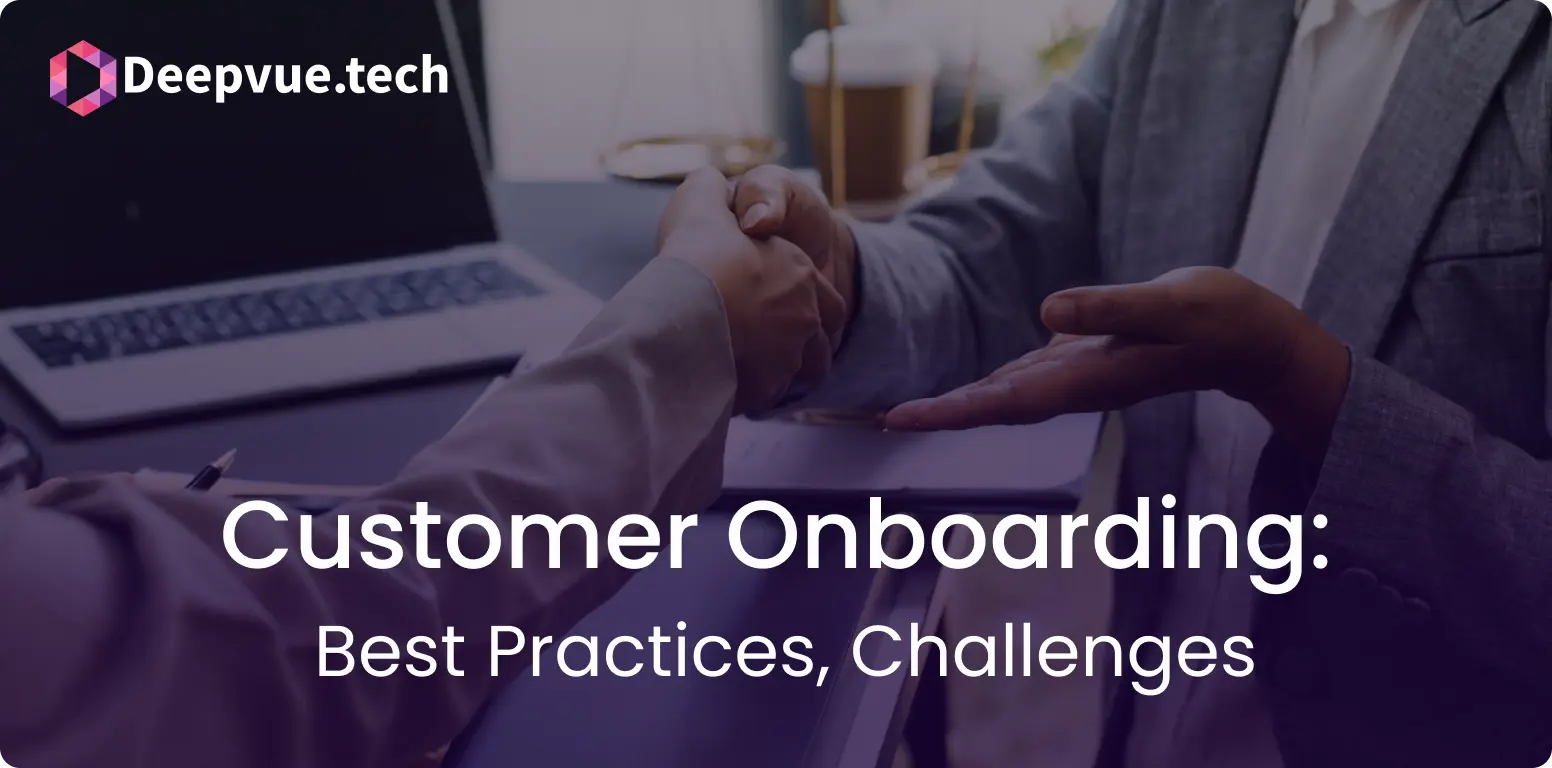Customer onboarding has become a critical component for businesses looking to build lasting relationships with their customers. This process, which involves welcoming and integrating new customers, has evolved significantly with advancements in technology.
Gone are the days of cumbersome paperwork and lengthy procedures. Businesses are leveraging digital solutions to create a seamless and efficient onboarding experience, as compared to age-old cumbersome & lengthy processes. . This article will explore the best practices and challenges associated with customer onboarding, providing valuable insights for businesses looking to optimize their processes.
What is Customer Onboarding?
Customer onboarding refers to the initial process that new customers go through when they start using a company’s product or service. This process includes everything from the initial sign-up to the first successful use of the product. An effective customer onboarding process is essential for ensuring customer satisfaction and loyalty.
Importance of Customer Onboarding
The customer onboarding process is vital for several reasons:
- First Impressions Matter: The onboarding process is often the first interaction a user has with a company. A seamless & easy experience leads to increased trust & satisfaction.
- Reduces Churn: Effective onboarding helps customers understand how to use a product or service, reducing the chances of them dropping out due to confusion or frustration.
- Boosts Customer Satisfaction: A smooth onboarding process makes customers feel valued and supported, enhancing their overall experience.
- Increases Efficiency: Streamlined onboarding processes save time and resources for both the customer and the business.
What is the Customer Onboarding Process?
The customer onboarding process refers to the series of steps a business takes to introduce new customers to its products or services, ensuring they have the necessary information and tools to get started successfully. This process typically involves:
- Initial Contact: Engaging with the customer through marketing, sales, or direct inquiries.
- Registration and Verification: Collecting necessary information and verifying customer identity.
- Setup and Configuration: Assisting customers in setting up accounts or configuring products to meet their needs.
- Training and Education: Providing tutorials, guides, or live support to help customers understand how to use the product or service.
- Follow-Up and Support: Checking in with customers to address any issues, gather feedback, and offer ongoing support.
Challenges in Customer Onboarding
Despite its importance, customer onboarding can present several challenges:
Lengthy and Complex Processes
Traditional customer onboarding often involves cumbersome paperwork, multiple forms, and lengthy approval processes. These complexities can frustrate customers and lead to high churn rates.
Lack of Personalization
A one-size-fits-all approach to the onboarding process fails to address the unique needs and preferences of individual customers. This lack of personalization can make customers feel undervalued and thus, they would not engage.
High Drop-off Rates
Complex and impersonal onboarding processes can result in high drop-off rates, where customers abandon the process midway. This is detrimental to businesses, leading to lost revenue and opportunities.
Inefficient Paperwork
Manual handling of paperwork is time-consuming and prone to errors. It can also cause delays and compliance issues, adding to operational costs and affecting customer satisfaction.
Best Practices for Customer Onboarding
To overcome these challenges and ensure a seamless onboarding experience, businesses can adopt several best practices:
1. Simplify the Process
Reduce the number of steps & simplify the onboarding form to streamline the onboarding process. Use clear and concise language to customers through each step, ensuring they understand what details are required.
2. Personalize the Experience
Tailor the onboarding process to meet the specific needs and preferences of each customer. Use data to provide personalized recommendations, which will make customers feel valued and understood.
3. Automate Where Possible
Automation can significantly improve the efficiency and accuracy of the onboarding process. Use automated workflows to handle repetitive tasks, send notifications, and ensure timely completion of the entire process.
4. Enhance Data Security
Ensure that customer data is handled securely throughout the onboarding process. Implement robust security measures, such as encryption and two-factor authentication, to protect sensitive information and build customer trust.
5. Provide Clear Instructions
Give clear and detailed instructions at each stage of the onboarding process. Use visuals, such as product tutorials and walkthroughs, to help customers understand how to use your platform effectively.
6. Offer Multi-Channel Support
Provide support through multiple channels, such as email, phone, chat, and social media. This ensures that customers can get help when they need it, improving their overall experience.
7. Gather Feedback
Collect feedback from customers throughout the onboarding process. Use this information to identify areas for improvement and make necessary adjustments to enhance the experience.
Leveraging Technology in Customer Onboarding
Technology plays a crucial role in transforming the customer onboarding process. Here are some ways businesses can use technology to improve onboarding:
Digital Onboarding Platforms
Digital onboarding platforms streamline the entire process by automating, verification, and processing the collected data. These platforms offer user-friendly interfaces and real-time support, making onboarding more efficient and engaging.
Identity Verification Tools
Identity verification tools ensure that new customers are who they claim to be, preventing fraud and enhancing security. These tools use advanced technologies, such as biometrics and AI, to verify identities quickly and accurately.
Data Analytics
Data analytics provides valuable insights into the onboarding process, helping businesses identify problems and areas for improvement. By analyzing metrics such as open rates, % of form completion and NPS, businesses can continuously improve their onboarding strategies.
AI and Chatbots
AI-powered chatbots can provide instant support to customers during the onboarding process. These chatbots can answer common questions, guide customers through each step, and escalate issues to support representatives when necessary.
Overcoming Challenges in Customer Onboarding
While digital onboarding offers numerous benefits, it also presents challenges that businesses must address:
Data Privacy and Security
With the increasing quantum of product adoption, businesses must ensure that data privacy and security are top priorities. Implementing robust security measures and complying with data protection laws is essential to protect customer information.
Accessibility and Inclusivity
Digital onboarding should be accessible to all customers, including those with disabilities or limited access to technology. Businesses must design their onboarding processes to be inclusive, ensuring that everyone can use the product comfortably.
Balancing Automation with Human Touch
While automation can improve efficiency, it is important to maintain a human touch in the onboarding process. Some customers may prefer human interaction, and businesses should provide accessible support channels to address their needs.
Regulatory Compliance
Compliance with industry regulations is important in the onboarding process, especially in sectors like finance and healthcare. Businesses must stay informed about relevant regulations and ensure that their onboarding processes meet these requirements.
Case Studies of Successful Customer Onboarding
Several industries have successfully transformed their customer onboarding processes through digital initiatives:
Banking Sector
Banks have adopted digital onboarding to allow customers to open accounts, apply for loans, and access financial services online. This shift has increased efficiency, reduced operational costs, and enhanced customer satisfaction.
E-commerce Platforms
E-commerce platforms have streamlined seller onboarding processes, enabling businesses to quickly set up online stores and start selling. This digital approach has facilitated the growth of online marketplaces and empowered entrepreneurs.
Software as a Service (SaaS)
SaaS providers use digital onboarding to help customers set up and use their software products efficiently. This approach reduces churn, improves customer satisfaction, and enhances the overall user experience.
Conclusion
Customer onboarding is a critical process that can significantly impact customer satisfaction, retention, and loyalty. By adopting best practices and leveraging technology, businesses can create a seamless and efficient onboarding experience.
Addressing challenges such as data privacy, accessibility, and regulatory compliance is essential for success. As businesses continue to evolve in the digital age, a streamlined & secure customer onboarding process will remain a key driver of growth and success.
To learn more about how Deepvue’s Verification Suite can enhance your verification process, visit Deepvue.tech and explore their range of APIs designed to ensure accuracy and efficiency.
FAQs
What is customer onboarding?
Customer onboarding is the process of introducing new customers to a company’s products or services, ensuring they have the information and tools needed to get started successfully.
Why is customer onboarding important?
It acts as a stepping stone to long-lasting customer relationships, leading to higher satisfaction, retention, and loyalty by providing a positive first impression.
What are some common challenges in customer onboarding?
Challenges include managing complexity, ensuring data security, addressing diverse customer needs, maintaining engagement, and balancing automation with personal interaction.
How can businesses improve their customer onboarding process?
Simplify steps, personalize experiences, provide clear instructions and support, automate tasks, and continuously gather feedback to make improvements.
What role does technology play in customer onboarding?
Technology streamlines processes, enhances personalization, improves data accuracy, ensures security, and provides analytics to continuously improve the onboarding experience.








